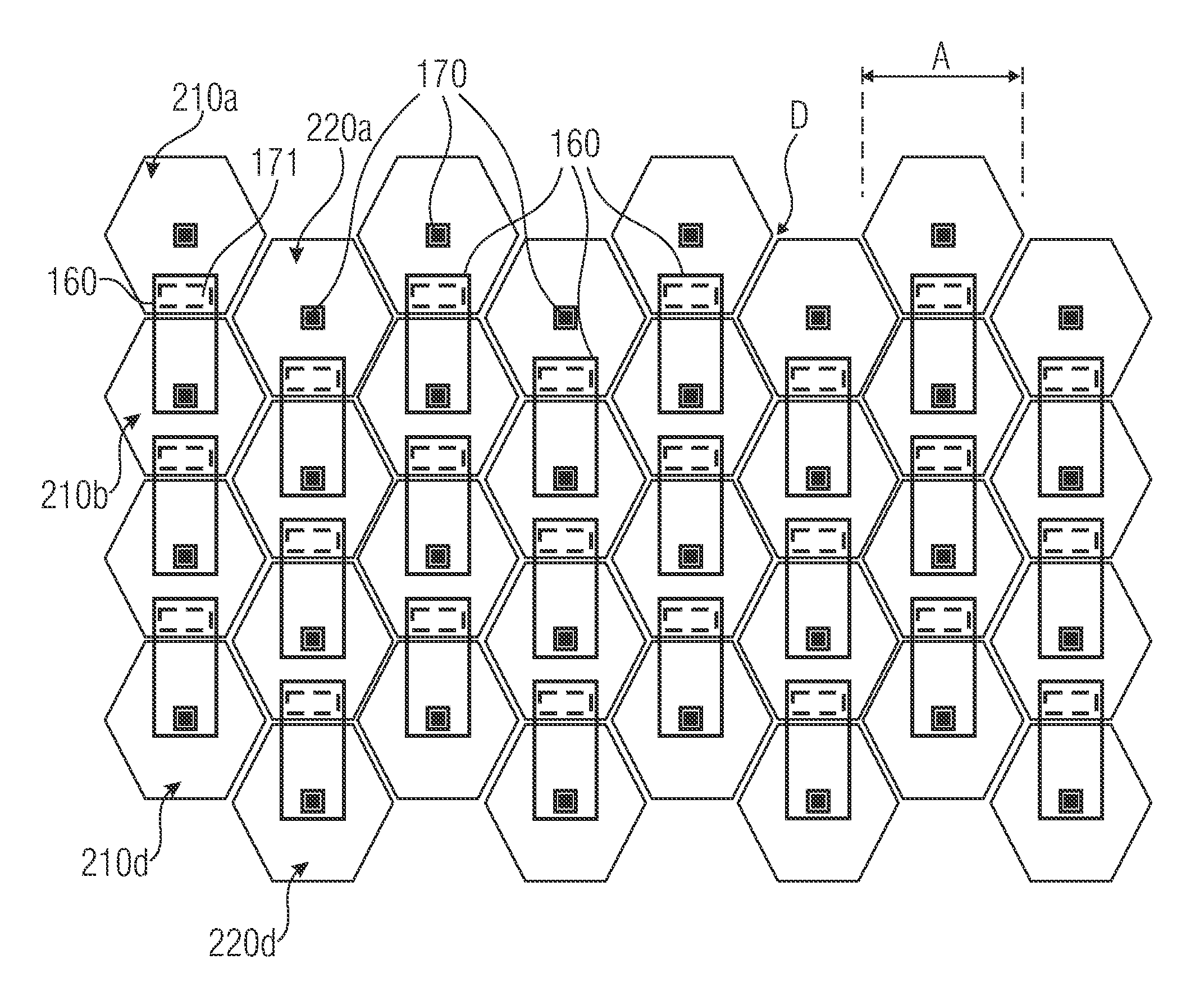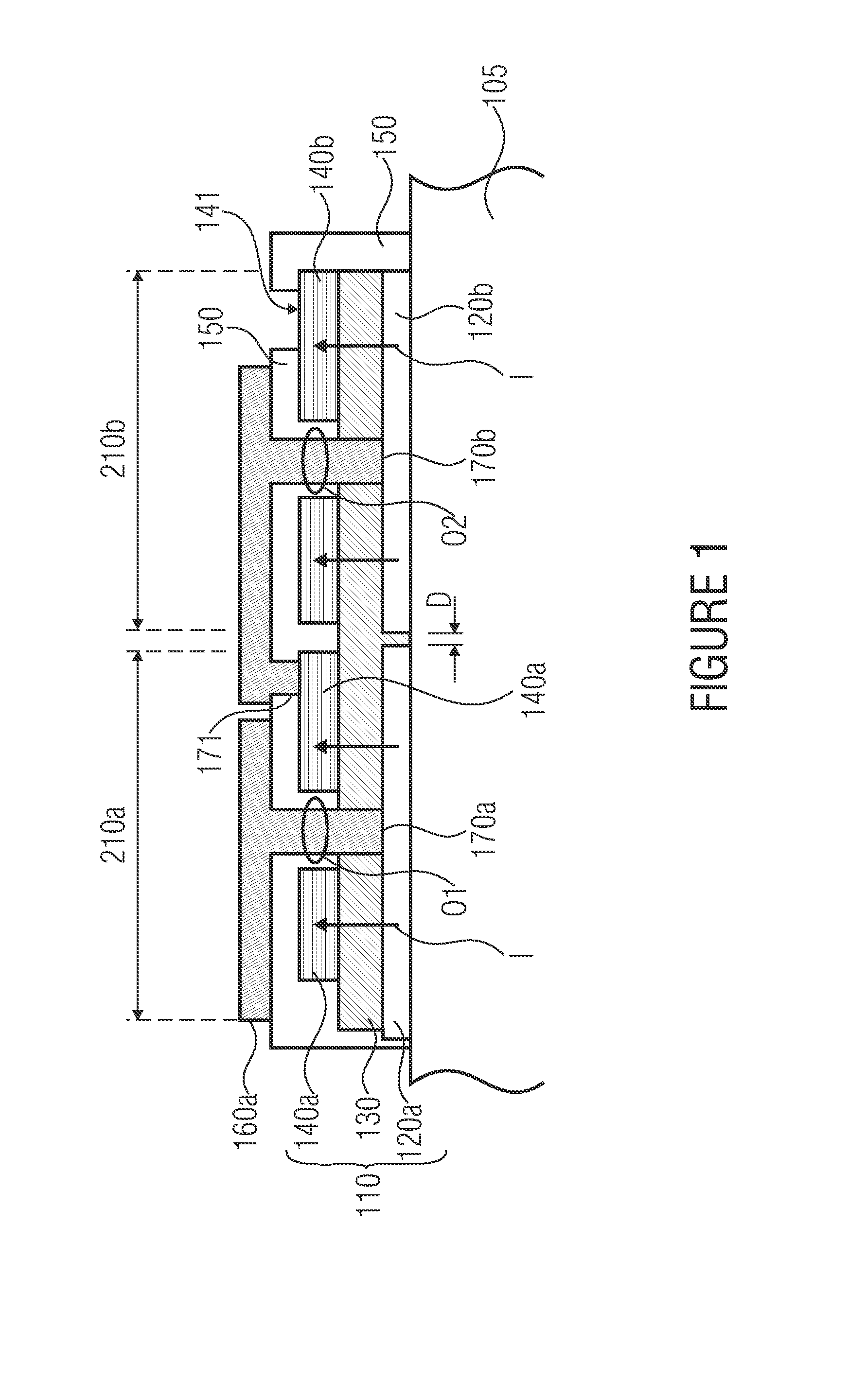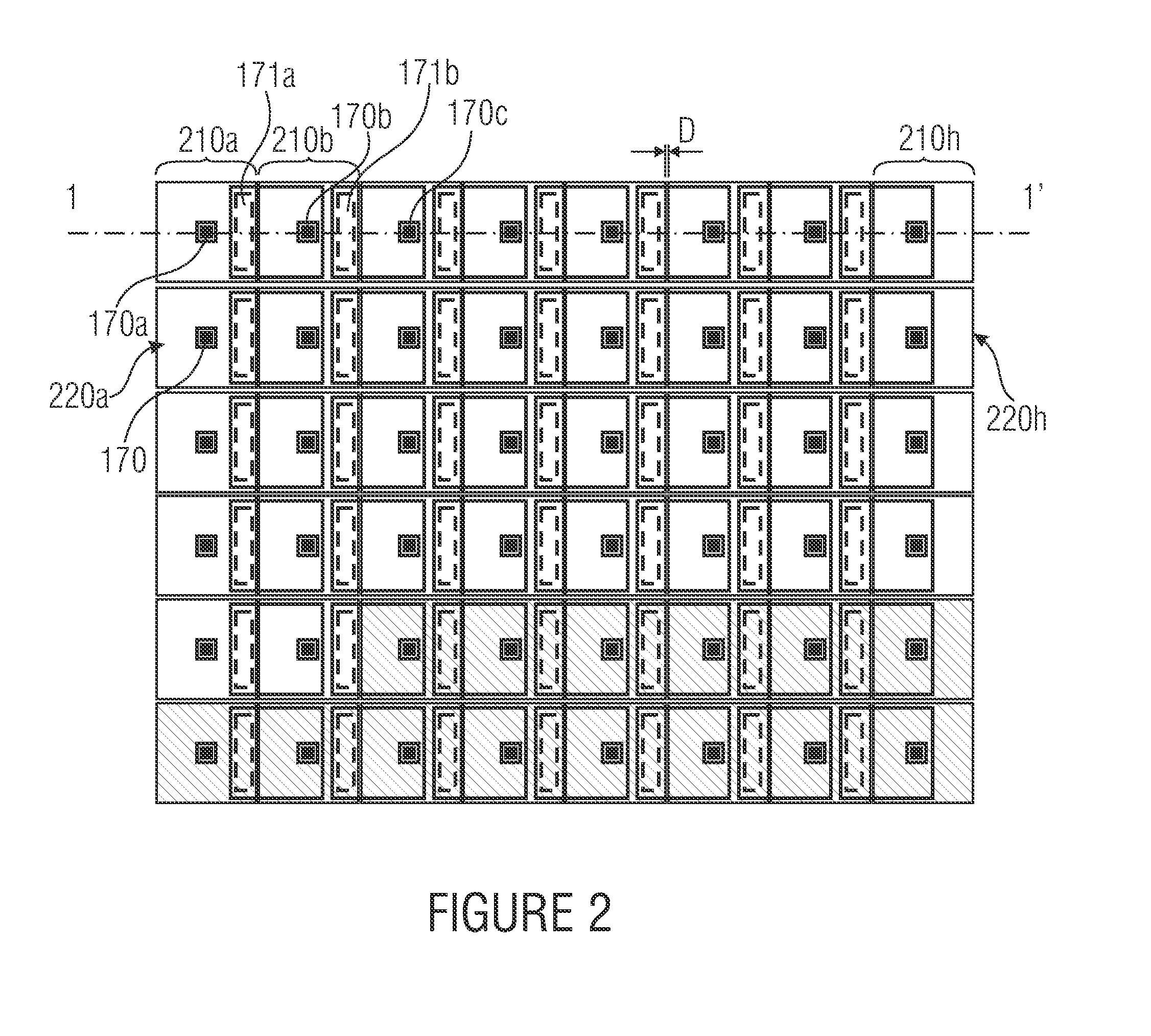Organic opto-electric device and a method for manufacturing an organic opto-electric device
a technology of opto-electric devices and organic materials, which is applied in the direction of organic semiconductor devices, solid-state devices, semiconductor devices, etc., can solve the problems of reducing the maximum usable size of the device, interconnected heat development, and generally unacceptable, so as to reduce the terminal resistance, reduce the overall current, and increase the luminous surface
- Summary
- Abstract
- Description
- Claims
- Application Information
AI Technical Summary
Benefits of technology
Problems solved by technology
Method used
Image
Examples
Embodiment Construction
[0031]Before the present invention is explained in more detail in the following with reference to the drawings, it is noted that like elements in the figures are provided with the same or like reference numerals and that a repeated description of those elements is omitted.
[0032]FIG. 1 shows an embodiment for an OLED structure according to an embodiment, wherein the illustrated OLED structure is merely to be regarded as an example and organic solar cells may comprise a completely analog structure.
[0033]The illustrated OLED structure comprises a substrate 105 on which a base electrode 120 is formed. The base electrode 120, in the illustrated embodiment, comprises a first part 120a and a second part 120b which are separated from each other along a gap having a width D. Onto the base electrode 120 an organic layer assembly 130 is implemented on which a cover electrode 140 is arranged. The cover electrode 140 comprises (just like the base electrode 120) a first part 140a and a second par...
PUM
 Login to View More
Login to View More Abstract
Description
Claims
Application Information
 Login to View More
Login to View More - R&D
- Intellectual Property
- Life Sciences
- Materials
- Tech Scout
- Unparalleled Data Quality
- Higher Quality Content
- 60% Fewer Hallucinations
Browse by: Latest US Patents, China's latest patents, Technical Efficacy Thesaurus, Application Domain, Technology Topic, Popular Technical Reports.
© 2025 PatSnap. All rights reserved.Legal|Privacy policy|Modern Slavery Act Transparency Statement|Sitemap|About US| Contact US: help@patsnap.com



